Polycaprolactone
Synonym(s):PCL;Resomer C 209, PCL;Resomer C 212, PCL
- CAS NO.:24980-41-4
- Empirical Formula: C6H10O2
- Molecular Weight: 114.1424
- MDL number: MFCD00084404
- EINECS: 244-492-7
- SAFETY DATA SHEET (SDS)
- Update Date: 2025-12-17 09:50:41
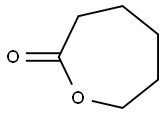
What is Polycaprolactone?
Chemical properties
intrinsic viscosity 1.00-1.30
The Uses of Polycaprolactone
Extrusion aid, die lubricant, mold release, pigment and filler dispersion aid and polyester segments in urethanes and block polyesters.
The Uses of Polycaprolactone
Biodegradable, biocompatible, and bioresorbable polymer composed of ε-caprolactone. This semi-crystalline material has been used in the fabrication of research medical devices and research tissue engineering solutions, such as orthopedic or soft tissue fixation devices. Degradation of this material has been thoroughly studied and has been shown to be safely resorbed by the body after implantation. Modification of molecular weight and polymer composition allows for control of the degradation rate and mechanical stability of the polymer.
The Uses of Polycaprolactone
Research applications of this material include:
- Tissue engineering scaffolds.
- 3D Bioprinting.
- Drug delivery applications such as sustained release.
Definition
ChEBI: Hexano-6-lactone is a epsilon-lactone that is oxepane substituted by an oxo group at position 2.
Properties and Applications
Polycaprolactone (PCL) is a biodegradable, semicrystalline polyester for use in tissue engineering and drug delivery research applications. Due to the increased length of the aliphatic chain, polycaprolactone degrades significantly slower than other common biodegradable polymers, such as polylactide. PCL features a low melting point (55-60 °C), making it ideal for thermal processing and increasing its use in novel applications such as 3D bioprinting. In addition to its favorable thermal properties, PCL also features high solubility in organic solvent allowing for a multitude of other processing options. This product features low residual water, monomer, and catalyst (tin) making it an ideal choice for use in tissue engineering and 3D bioprinting research.
Reactivity Profile
Polycaprolactone (PCL) is biodegradable polyester with a low melting point of around 60 °C and a glass transition temperature of about 60 °C. PCL is prepared by ring-opening polymerization of ε-caprolactone using a catalyst such as stannous octanoate[1]. Polycaprolactone is a semicrystalline linear polyester produced by ring-opening polymerisation of epsilon-caprolactone, which is commonly derived from fossil carbon. It has a much lower glass-transition temperature (Tg = ? 60 °C) than other biodegradable polymers, which assists its biodegradability despite its high degree of crystallinity, typically 50%[2].
References
[1] McKeen, L. “1 – Introduction to Use of Plastics in Food Packaging.” 2013. 1-15.
[2] Abdelhamid, Hani Nasser. “Biodegradable Polymer Nanocomposites.” 2023. 0.
Properties of Polycaprolactone
| Melting point: | 60 °C(lit.) |
| Density | 1.146 g/mL at 25 °C |
| storage temp. | -20°C |
| form | pellets |
| Odor | odorless |
| InChI | InChI=1S/C6H10O2/c7-6-4-2-1-3-5-8-6/h1-5H2 |
| EPA Substance Registry System | 2-Oxepanone, homopolymer (24980-41-4) |
Safety information for Polycaprolactone
| Signal word | Warning |
| Pictogram(s) |
 Exclamation Mark Irritant GHS07 |
| GHS Hazard Statements |
H315:Skin corrosion/irritation H319:Serious eye damage/eye irritation H335:Specific target organ toxicity, single exposure;Respiratory tract irritation |
| Precautionary Statement Codes |
P261:Avoid breathing dust/fume/gas/mist/vapours/spray. P271:Use only outdoors or in a well-ventilated area. P280:Wear protective gloves/protective clothing/eye protection/face protection. |
Computed Descriptors for Polycaprolactone
| InChIKey | PAPBSGBWRJIAAV-UHFFFAOYSA-N |
| SMILES | O1CCCCCC1=O |
Polycaprolactone manufacturer
Nomisma Healthcare Private Limited
New Products
4,4-Difluoropiperidine hydrochloride tert-butyl 9-methoxy-3-azaspiro[5.5]undecane-3-carboxylate Indole Methyl Resin N-Isopropylurea N,N-Dicyclohexylcarbodiimide(DCC) MELDRUMS ACID 5-METHYLISOXAZOLE-4-CARBOXYLIC ACID Magnessium Bis glycinate Zinc ascorbate 1-bromo-2-butyne 2-acetamidophenol 9(10H)-anthracenone Erythrosin B, 4-Piperidinopiperidine 2-((4-morpholinophenylamino) (methylthio) methylene) malononitrile 2,4-dihydroxybenzaldehyde 3-(4-morpholinophenylamino)-5-amino-1H-pyrazole-4-carbonitrile Methyl 2-methylquinoline-6-carboxylate 2,6-dichloro-4-nitropyridine 4-Bromo-2-chlorobenzonitrile 2-(benzylamino)acetic acid hydrochloride 4-(tert-Butoxycarbonylamino)but- 2-ynoic acid 3,4-dihydro-2H-benzo[b][1,4]dioxepine 1-Phenyl-1-cycloprppanecarboxylicacidRelated products of tetrahydrofuran


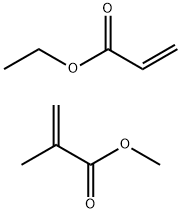

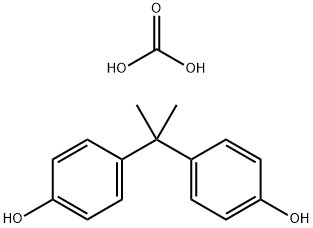
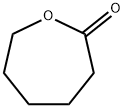
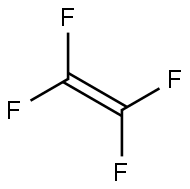

You may like
-
 Polycaprolactone, pract CAS 24980-41-4View Details
Polycaprolactone, pract CAS 24980-41-4View Details
24980-41-4 -
 Polycaprolactone, average Mw ~14,000, average Mn ~10,000 by GPC CAS 24980-41-4View Details
Polycaprolactone, average Mw ~14,000, average Mn ~10,000 by GPC CAS 24980-41-4View Details
24980-41-4 -
 Polycaprolactone, average Mn 80,000 CAS 24980-41-4View Details
Polycaprolactone, average Mn 80,000 CAS 24980-41-4View Details
24980-41-4 -
 Polycaprolactone, average Mn 45,000 CAS 24980-41-4View Details
Polycaprolactone, average Mn 45,000 CAS 24980-41-4View Details
24980-41-4 -
 Polycaprolactone Mn 70,000-90,000 CAS 24980-41-4View Details
Polycaprolactone Mn 70,000-90,000 CAS 24980-41-4View Details
24980-41-4 -
 Polycaprolactone CASView Details
Polycaprolactone CASView Details -
 Polycaprolactone CASView Details
Polycaprolactone CASView Details -
 Polycaprolactone CASView Details
Polycaprolactone CASView Details
